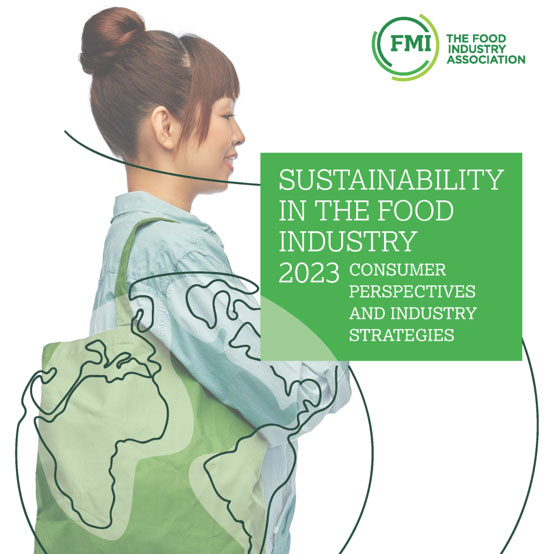By: Andrew Harig, Senior Director of Sustainability, Tax & Trade, Food Marketing Institute
First, let me explain self-assembly, or at least give it the old college try. The formal definition of self-assembly is: “a process by which disordered parts build an ordered structure through local interaction.” Think of a water pipe that we put in the ground. If the earth shifts or a tree grows into the pipe, it might burst and our only option is to dig up the pipe and revert it. But what if that pipe was made of a smart material that could change or distort based on pressure or contact with water? That’s the concept of self-assembly. “The idea is to create programmable materials to change shape or properties—smarter and smarter materials that use less resources,” shared Tibbits.
At the Self-Assembly Lab scientists are experimenting with printing materials that transform over time—which is what they call 4D printing. Some of these printed materials work like the pipe example—they can sense their environment and then expand and contract to fit their surroundings needs. Other materials transform all together, like the string that transforms into the letters M-I-T when placed in water. The larger goal, shared Tibbits, is to examine how to program existing materials with other industrial processes. “Most companies want smarter and smarter products,” said Tibbits, “but to do so that they need more resources—money, complexity, energy, etc. We’re proposing that doesn’t need to happen. By using programmable materials you can make a smart package that can sense the environment around it and share data, but while it does more, it is made for less.”
Tibbits sees self-assembly and programmable materials impacting a variety of industries, but when it comes to the food industry the greatest impact might be on sustainability efforts. “One of the positive side effects of our research is that we look at doing more with less and embed more capabilities into our materials. We consider different types of power—temperature, sunlight, moisture—instead of just fuel or batteries,” said Tibbits. The Self-Assembly Lab also studies and creates products that last longer, self-repair and can configure into different functions when needed. This adaptive quality extends the life of the materials and is the ultimate form of recycling. Lastly, Tibbits believes that if a product can self-assemble then it should also be able to self-disassemble. “We experiment with solids turning into liquids and breaking down and building up parts,” said Tibbits.
When you consider the reduce, reuse and recycling qualities of programmable materials in the food industry supply chain, the possibilities are endless—reduced fossil fuel usage in material manufacturing, packages that can be reused, or even delivery crates that deconstruct to be recycled. Tibbits sees even more possibilities, “In a lot of ways, food is the original 4D printed item. One of the things we can consider with this technology is looking at changing the fundamental properties of food—whether that is behavior, taste, functionality, nutrition or even safety,” shared Tibbits.
Guess we’ll have to wait and see what the Self-Assembly Lab cooks up next. Want to know more? Join us in Nashville, TN, August 9 – 11 at the Global Sustainability Summit and hear from Tibbits first hand.

 Industry Topics address your specific area of expertise with resources, reports, events and more.
Industry Topics address your specific area of expertise with resources, reports, events and more.
 Our Research covers consumer behavior and retail operation benchmarks so you can make informed business decisions.
Our Research covers consumer behavior and retail operation benchmarks so you can make informed business decisions.
 Events and Education including online and in-person help you advance your food retail career.
Events and Education including online and in-person help you advance your food retail career.
 Food Safety training, resources and guidance that help you create a company food safety culture.
Food Safety training, resources and guidance that help you create a company food safety culture.
 Government Affairs work — federal and state — on the latest food industry policy, regulatory and legislative issues.
Government Affairs work — federal and state — on the latest food industry policy, regulatory and legislative issues.
 Get Involved. From industry awards to newsletters and committees, these resources help you take advantage of your membership.
Get Involved. From industry awards to newsletters and committees, these resources help you take advantage of your membership.
 Best practices, guidance documents, infographics, signage and more for the food industry on the COVID-19 pandemic.
Best practices, guidance documents, infographics, signage and more for the food industry on the COVID-19 pandemic.
